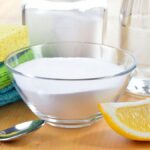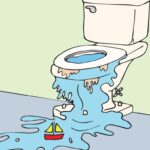Plaque is a sticky film of bacteria that forms on your teeth and can cause a range of dental issues, including gum disease and tooth decay. Fortunately, there are many techniques and tools available to effectively remove plaque from your teeth. In this article, we’ll explore some of the most effective techniques and tools for removing plaque.
Brushing and Flossing
Brushing and flossing are the most basic and essential techniques for removing plaque. Brush your teeth at least twice a day using a soft-bristled toothbrush and fluoride toothpaste. Be sure to brush all surfaces of your teeth, including the fronts, backs, and chewing surfaces. Use gentle circular motions and don’t forget to brush your tongue to remove bacteria and freshen your breath.
Floss at least once daily to remove plaque and food particles from between your teeth and the gum line. Use about 18 inches of floss, winding most of it around your middle fingers, and use your index fingers to guide the floss between your teeth. Be gentle and avoid snapping the floss, which can damage your gums.
Mouthwash
Mouthwash is another useful tool for removing plaque and freshening your breath. Choose an antiseptic mouthwash that contains fluoride to kill bacteria and strengthen your teeth. Swish the mouthwash around your mouth for 30 seconds, then spit it out. Don’t rinse with water afterwards, as this can wash away the benefits of the mouthwash.
Interdental Brushes
Interdental brushes are small brushes designed to clean between teeth and around braces, implants, and other dental appliances. They come in various sizes and can be more effective than flossing in certain areas of the mouth. To use an interdental brush, insert it between your teeth and gently move it back and forth.
Water Flossers
Water flossers, also known as oral irrigators, use a stream of water to remove plaque and debris from between teeth and along the gum line. They’re a good option for people with braces or other dental appliances that make flossing difficult. To use a water flosser, aim the stream of water between your teeth and along the gum line.
Tongue Scrapers
Tongue scrapers are small tools designed to remove bacteria and debris from the surface of your tongue. They can help freshen your breath and improve oral hygiene. To use a tongue scraper, gently glide it across the surface of your tongue, starting at the back and working your way forward.
Seeing a Reputable Dentist
While these techniques and tools can be effective for removing plaque, it’s important to see a dental professional for regular check-ups and cleanings. A dentist Narre Warren can help identify potential dental issues early on, before they become more serious. They can also provide a professional cleaning that can remove plaque and tartar from areas that are difficult to reach with brushing and flossing alone.
During a dental cleaning, a dental hygienist will use specialized tools to remove plaque and tartar from your teeth and along the gum line. They will also polish your teeth to remove surface stains and give you a brighter, healthier smile.
In addition, a reputable dentist can provide personalized advice on how to improve your oral hygiene at home. They can also offer treatments such as fluoride treatments and dental sealants that can help prevent tooth decay and other dental issues.
Plaque is a common dental issue that can lead to a range of problems if left untreated. Fortunately, there are many techniques and tools available to effectively remove plaque and improve oral hygiene. By brushing and flossing regularly, using mouthwash, and incorporating tools like interdental brushes, water flossers, and tongue scrapers into your routine, you can help keep your teeth and gums healthy and free of plaque.
However, it’s important to see a dentist for regular check-ups and cleanings. A dental professional can identify potential dental issues early on, provide a professional cleaning to remove stubborn plaque and tartar, and offer personalized advice on how to improve your oral hygiene at home.





